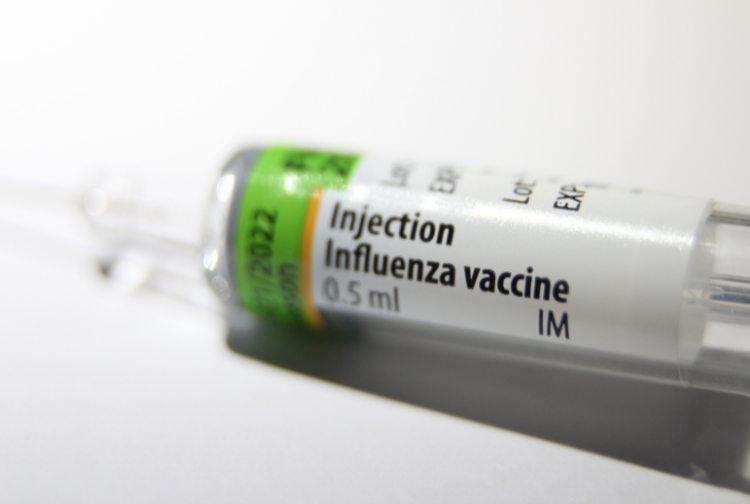
How wearable tech can help you track your heart health – and even spot AFib
September 20, 2024
AFib is short for atrial fibrillation, is the most common form of irregular heartbeat. Age is typically the largest risk factor for developing AFib, with most AFib occurring in patients over 65. However, in recent years, AFib has been increasingly diagnosed in younger patients; a recent study indicated that one in four adults living with AFib is under age 65.
However, an increased rate of diagnosis doesn’t necessarily mean that AFib itself is on the rise in young people; it may just mean it’s become easier to spot AFib in recent years – and that may be down to smartwatches.
“The proliferation of smart devices that are readily available to the consumer and that can record your heart rhythm have partially led to the increased diagnosis of AFib in younger people,” said Ken Ellenbogen, M.D., director of Clinical Cardiac Electrophysiology and Pacing at the Pauley Heart Center. For example, all available models of the Apple Watch and Samsung Galaxy Watch monitor heart rate and alert the wearer to irregular heart rhythms, and some models of both watches can also perform electrocardiograms – that is, a recording of the electrical activity of the heart – and monitor for sleep apnea. Wearable fitness and wellness trackers, such as those made by Fitbit, Garmin, Oura, and many other purveyors, offer similar heart health alerts and tools.
Ellenbogen notes that, regardless of age, AFib is commonly caused by a combination of lifestyle factors.
“[AFib] is also due to diet and lifestyle and habits – alcohol, caffeine, sleep deprivation, obesity – as well as sleep-disordered breathing and hypertension. All of those things are leading to an increased prevalence of AFib,” Ellenbogen notes. Rates of AFib are predicted to rise by more than 60% by the year 2050; about 1 in 4 adults over the age of 40 are likely to develop AFib at some point in their lives.
How you can monitor your heart health at home
If you are interested in monitoring your heart rate and rhythm but do not have access to a smartwatch, there are numerous other, relatively affordable options for keeping track of your heart health.
The least expensive of these is an at-home blood pressure cuff, which will alert the wearer if the detected heart rate is irregular. Options for at-home BP cuffs include those made by Greater Goods, Omron, and A&D Medical.
If you own a smartphone, there are a variety of for-pay mobile apps that can monitor heart rate (such as Cardiio) using your phone’s camera, as well as pocket-sized devices that pair with smartphones to record EKGs using only the fingertips (such as Alivecor KardiaMobile).
A third option is a wearable heart rate monitor, many of which cost under $100.
Even if you’re not monitoring your heart rate, you can watch for potential symptoms of AFib. The most common symptom in younger patients, Ellenbogen says, is rapid heart rate or palpitations, whereas the most common symptom in older patients is feeling winded or short of breath.
“Often our older patients will say they have days where they ‘just don’t feel like themselves,’” Ellenbogen noted. “They attribute this to simply ‘getting old,’ but we find that the off days correlate very closely with the occurrence of AFib.”
Other common symptoms include fatigue, exhaustion, dizziness, and/or fainting.
If you are notified of an irregular heartbeat from your smartwatch, fitness tracker, or other health monitoring device – or if you have been experiencing any of the symptoms mentioned above – you should reach out to your general practitioner to discuss. You can also call the Pauley Heart Center at 804-628-4327 to schedule a consultation (or request an appointment here; choose cardiology in the first drop-down menu).
Why treating AFib is so important
While AFib itself is not typically life-threatening, AFib makes it more difficult for your heart to pump blood, which can lead to many other potentially fatal complications, including heart attack and stroke. In fact, AFib is the leading cause of stroke; people with AFib are five times more likely to have a stroke than people without AFib.
There are a variety of treatments for AFib, including medicines, non-surgical procedures, device implantation, and heart surgery. Today, one of the most common treatments is ablation, in which flexible catheters are inserted into blood vessels and directed to the heart, where doctors then use the catheter’s electrodes to both find faulty electrical sites in the heart and treat them by applying radiofrequency energy. By delivering short pulses of energy to the faulty sites, the catheter creates scar tissue on the heart muscle that blocks the incorrect signaling.
Ellenbogen and his team helped to develop this treatment at VCU Health more than 25 years ago.
“In 1998, we pioneered one of the first systems to treat AFib using catheter ablation,” Ellenbogen said. “This was years ahead of anyone else.” Prior to the introduction of catheter ablation, patients with AFib and other heart rhythm disorders had to undergo open-heart surgery for treatment. “Our whole theory was that if we could just reproduce with a catheter, what surgeons did with a scalpel, we could really help patients,” Ellenbogen continued. “It was a really exciting time – and since then, VCU Health has been involved in virtually every development in ablation for AFib.”
Depending on each patient and what is needed for their care, ablation can be performed in different ways. Two other types of ablation include balloon cryoablation (a balloon containing nitrogen gas is used to freeze the heart tissue) and pulsed field ablation (high-voltage energy targets problematic cardiac cells, rather than whole sections of heart tissue). VCU Health was one of the first ten hospitals in the world to trial balloon cryoablation, and it was the first in the region to perform pulsed field ablation.
“The technology continues to evolve, and we’re just very excited to be a part of the leading edge in terms of providing our patients with treatment options for AFib,” Ellenbogen said. “There are only two places in the entire country besides us that have been doing AFib ablation since 1998. It’s our experience with thousands and thousands of patients over the years – and our willingness to experiment and test new technologies before they become commercially available – that makes the Pauley Heart Center so great.”



